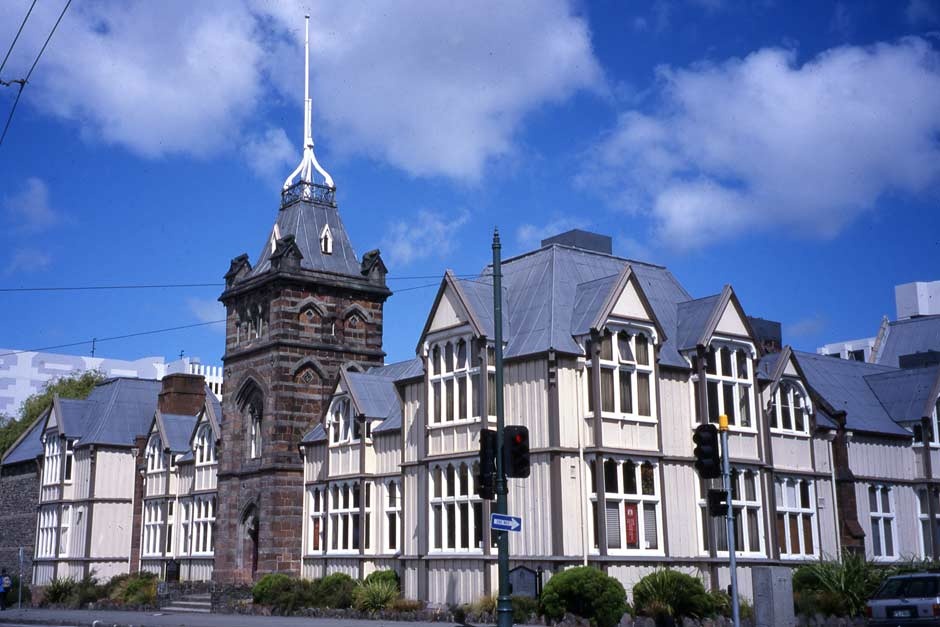
Canterbury Provincial Council Chambers (1859-65)
Built to last?
When the New Zealand Constitution Act 1852 became British law, the colony’s 30,000 European inhabitants found themselves ruled by a governor, a two-house General Assembly, six elected provincial superintendents and six provincial councils. The councils got down to business in 1853 and functioned like a watered-down version of contemporary American, Australian and Canadian states and provinces. They had more influence over the daily lives of their citizens than central government but by the early 1870s railways, the electric telegraph and steamships were knitting the colony together more effectively. The smaller provinces were struggling and Premier Julius Vogel’s huge development and immigration schemes really needed one central authority to work effectively.
We are inclined to shake our heads over the demise of the six provinces and their four breakaways, one of which. Southland, had its government furniture seized by creditors. Yet as historian James Belich suggests, the council buildings in Canterbury and Otago (now demolished) show that ‘these structures, and perhaps the system they symbolised, were built to last’. Canterbury built its provincial parliament in three stages, each portion reflecting increasing prosperity. The oldest, in the middle of Durham Street, dates from 1859. Its high point is the wooden chamber. Next came the Armagh Street frontage (1861). Four years later they built in stone, completing Benjamin Mountfort’s supreme flourish, the magnificent Stone Chamber and the river-front Bellamy’s (its name was that of the House of Commons watering hole, showing the seriousness with which the Canterbury politicians took their work).
The Canterbury Provincial Council Chambers occupies a special place in the history of New Zealand heritage. In 1928 Parliament passed an Act specifically to protect the Stone Chamber, New Zealand’s finest High Victorian Gothic interior. Nine years later new legislation protected the rest of the complex.
But was it built to last? The old complex was doing fine until the September 2010 and subsequent 2011 earthquakes and aftershocks first damaged and then munted it, wreaking especially heavy damage on the masonry sections. It remains fenced off awaiting a final decision on its future. A recent engineering assessment has shown that parts of it will have to be rebuilt.
Related place
At the corner of Victoria, Montreal and Salisbury Streets, 400 m north-west of the Provincial Chambers, you will find a clock that briefly graced the Provincial Council complex. Since 1897 it has been mounted in a tower that memorialised Queen Victoria’s diamond jubilee. The Victoria Clock Tower was also badly damaged in the earthquakes, but in 2013 seemed likely to soon be repaired.
Further information
This site is item number 24 on the History of New Zealand in 100 Places list.
Websites
- Heritage New Zealand List entry
- Christchurch City Council history
- Te Ara
- Christchurch under siege - Roadside Stories (video)
- Victoria Clock Tower - Heritage New Zealand List
Books
- Ian Lochhead, A dream of spires, Canterbury University Press, Christchurch, 1999
- W.P. Morrell, The provincial system in New Zealand 1852-76, Whitcombe & Tombs, Christchurch, 1964










Community contributions